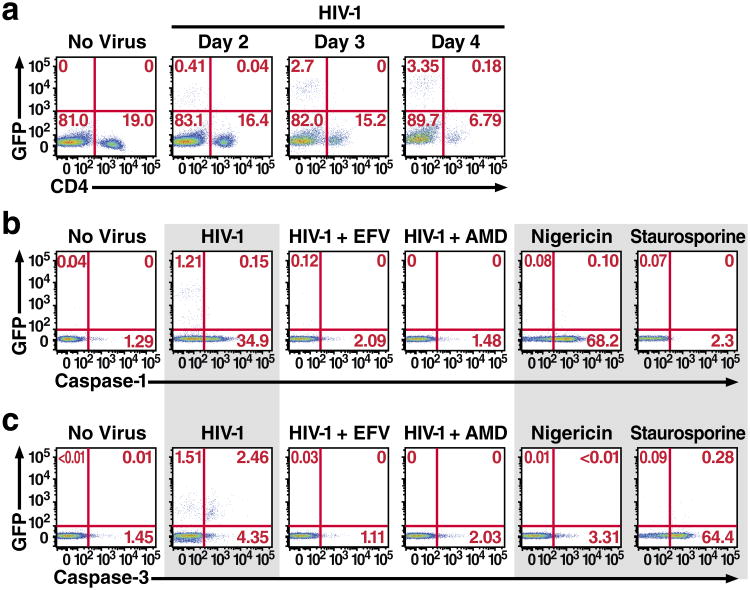Figure 1.
Host permissivity determines the CD4 T-cell death pathway employed following HIV infection. a. Kinetics of spreading viral infection versus depletion of CD4 T cells after infection of HLACs with a replication-competent HIV reporter virus encoding GFP. The relative proportion of CD8 T cells was not altered (not shown). Consistent with our previous report, HIV-infected HLACs contain a small number of productively infected cells, while almost all of the dying cells are abortively infected 11. b. Abortively infected CD4 T cells exclusively activate caspase-1. Nigericin induces abundant caspase-1 activation in uninfected cells. c. Productively-infected CD4 T cells activate caspase-3, but not caspase-1. (b) and (c) represent cells from the same infected tonsil culture. Efavirenz and AMD3100 were added to the indicated cultures prior to HIV infection. These data are representative of four independent experiments performed with tonsil cells isolated from four different donors.

